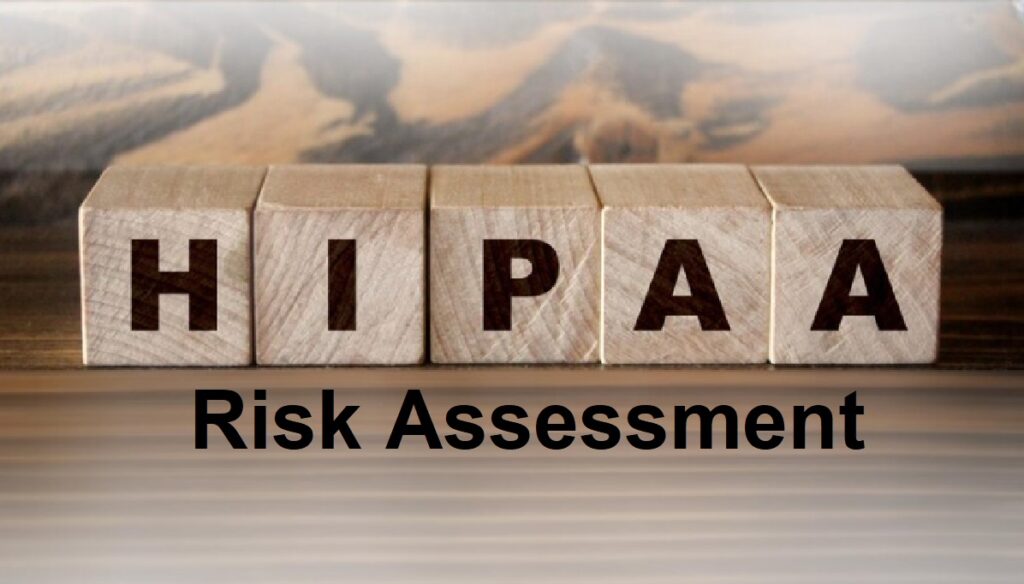A HIPAA Risk Assessment is an audit process designed to identify potential risks and vulnerabilities pertaining to the confidentiality, integrity, and availability of electronically protected health information (ePHI). Alongside policies and procedures, it is among the most critical elements in achieving Health Insurance Portability and Accountability Act (HIPAA) compliance.
HIPAA risk assessments are vital for covered entities, including medical centers, health plans, business associates, subcontractors, and vendors handling PHI.
To prevent potential ePHI data breaches, these assessments are required to be conducted at least once a year (every six months ideally) and whenever significant changes are introduced to work processes, technology, or major IT system upgrades.
In this article, we will delve deeper into the components of a comprehensive HIPAA Risk Assessment, aiming to provide you with the knowledge and tools needed to enhance your data security measures in the healthcare sector.
Understanding HIPAA Regulations and Compliance
Now that we know what is HIPAA, let’s understand its regulations and compliance principles.
HIPAA outlines several rules to safeguard Protected Health Information (PHI), including the Privacy, Security, and Breach Notification Rule.
HIPAA Privacy Rule
While not directly requiring a privacy risk assessment, the Privacy Rule under HIPAA presents several scenarios where conducting such an assessment becomes essential.
For example, the Administrative Requirements of the Privacy Rule (45 CFR § 164.530) necessitates Covered Entities to safeguard PHI from intentional or unintentional use or disclosure that violates the standards.
To adhere to these standards, entities need to identify risks, threats, and vulnerabilities to PHI in the same way they do with Electronic Protected Health Information (ePHI). Consequently, they must develop policies and procedures to safeguard PHI, train their staff on these policies, and establish a sanctions policy for staff failing to comply.
HIPAA Security Rule
Under the Security Rule, conducting a HIPAA risk assessment is part of the standard for Administrative Safeguards and is compulsory for both Covered Entities and Business Associates. This requirement relates to identifying risks and vulnerabilities that could affect the confidentiality, integrity, and availability of ePHI. Still, it’s considered best practice to perform risk assessments for all elements of HIPAA compliance.
The objective of this Standard (45 CFR § 164.308) is to implement policies and procedures to prevent, detect, contain, and correct security violations. As stated in the Standard, It requires entities to:
- Conduct an accurate and thorough assessment of the potential risks and vulnerabilities to the confidentiality, integrity, and availability of electronic protected health information held by the covered entity.
- Implement security measures sufficient to reduce risks and vulnerabilities to a reasonable and appropriate level to comply with § 164.306(a).
- Apply appropriate sanctions against workforce members who fail to comply with the security policies and procedures of the covered entity.
- Implement procedures to regularly review records of information system activity, such as audit logs, access reports, and security incident tracking reports.
HIPAA Breach Notification Rule
Introduced in 2009 under the HITECH Act, the HIPAA Breach Notification Rule obligates Covered Entities and Business Associates to notify individuals, the Department of Health and Human Services (HHS), and sometimes the media when a breach of unsecured PHI has occurred.
Covered Entities and Business Associates can determine the probability of a PHI compromise via a HIPAA Privacy Assessment. This assessment should consider the nature and extent of the breach, who accessed the unsecured PHI, whether the PHI was actually acquired and viewed, and the extent to which the risk to PHI has been mitigated.
Learn about HIPAA and conduct a Risk Assessment to improve ePHI data security in your healthcare organization.
Conducting a Comprehensive HIPAA Risk Assessment
Scope and Objectives
The scope of a HIPAA risk assessment covers all electronically protected health information (ePHI) that your organization:
- Creates.
- Receives.
- Maintains.
- Or transmits.
This encompasses electronic protected health information (ePHI) in various formats, including hard drives, CDs, DVDs, smart cards, personal digital assistants, and portable electronic media. Moreover, electronic media comprises individual workstations and interconnected networks spanning multiple locations, including remote workstations.
Data Collection
Data collection for a HIPAA risk assessment includes:
- Conducting a comprehensive review of past and ongoing projects.
- Conducting interviews with relevant individuals.
- Thoroughly examining all pertinent documentation.
- Employing additional data-gathering techniques as required.
- Documenting all the data collected during the process.
Risk Identification
The process of risk identification includes the following:
- Assessing the current security measures you have in place (both technical and non-technical)
- Determining whether those security measures’ configuration and use are appropriate
You must also look at the gathered data and consider what types of threats and vulnerabilities exist for each piece of information.
Risk Analysis and Evaluation
Risk analysis and evaluation involve determining the likelihood of a threat occurrence and the potential impact of such an occurrence. This includes assessing the probability that a threat will trigger or exploit a specific vulnerability and considering each potential threat and vulnerability combination.
Risk Mitigation Strategies
Analyze and document the potential security measures that can be implemented to mitigate each identified risk to an acceptable level. Check out our HIPAA checklist for comprehensive guidance on ensuring compliance and safeguarding electronic protected health information (ePHI).
Consider the effectiveness of the measures, the applicable regulatory requirements for their implementation, and any relevant organizational policies and procedures. Ensure that all findings are thoroughly documented to finalize the risk assessment process.
Documentation and Reporting
Risk Assessment Documentation
HIPAA Risk Assessment documentation is as crucial as the process itself. The records generated during this process serve as proof of compliance, a blueprint for risk management, and a vital resource during audits.
Here’s how you should approach it:
- Organization of Documents: Create a structured system for organizing your risk assessment documentation. This could involve categorizing documents based on the type of information (e.g., methodology, identified risks, mitigation measures) or the system or process they relate to.
- Clear and Concise Documentation: Ensure the documents are concise and comprehensive. They should be easily understandable to all stakeholders, both internal as well as external, including those without technical expertise.
- Retention of Documents: According to HIPAA’s Security Rule, documentation should be retained for at least six years from the date of its creation or the date when it was last in effect, whichever is later.
- Presentation of Findings: Your documentation should facilitate the easy extraction of key findings and insights. Use visuals like graphs, charts, or heat maps where appropriate to make the data more digestible.
- Accessibility: The documentation must be readily accessible to those who need it, including your risk management team, auditors, and any other authorized personnel. At the same time, strict access controls should be in place to prevent unauthorized access.
Reporting and Compliance
Some general steps related to HIPAA reporting include:
- Internal Reporting: Establishing clear procedures for reporting the risk assessment findings within the organization. This could include presenting to senior management or key stakeholders.
- Addressing Identified Risks: Creating a risk management plan to address identified risks. This plan should outline who is responsible for implementing each mitigation measure and when and how this will be done.
- Compliance Documentation: Maintaining records to show compliance with HIPAA requirements. This could include documentation of the risk assessment process, risk management plans, policies and procedures, training records, and more.
- Audit Preparation: Healthcare organizations should be prepared for potential HIPAA audits by having all necessary documentation readily available and up-to-date.
Using a HIPAA compliance software solution for digital healthcare can take the work off your shoulders, allowing you to focus more on the clinical aspects of your applications.
Continuous Monitoring and Evaluation
Changes in technology, systems, personnel, and the broader external environment can introduce new risks or modify existing ones. Therefore, healthcare organizations need to be flexible and responsive to these changes.
Importance of Ongoing Monitoring
Ongoing monitoring for HIPAA compliance enables early identification of new risks or changes to existing ones, allowing for timely action to mitigate potential harm. It helps validate the effectiveness of risk mitigation measures, ensuring that they continue to function as intended.
Periodic Risk Assessments
Periodic risk assessments provide a structured, in-depth review of risk profiles for healthcare organizations.
A common practice is to conduct full risk assessments annually. However, significant changes, such as implementing new electronic health record systems, moving facilities, or experiencing a data breach, should trigger additional risk assessments.
Partner with a HIPAA compliance software solution like MedStack, which can also help to automatically generate evidence and support achieving key certifications.
Staff Training and Education
Healthcare staff is the first line of defense and potentially the weakest link in an organization’s security.
Regular training sessions help keep staff informed about HIPAA requirements, organizational policies and procedures, and emerging cybersecurity threats. Organizations should provide additional training to ensure staff understand and can adhere to new requirements whenever significant changes occur, either in regulations or internal policies.
Conclusion
In conclusion, conducting a comprehensive HIPAA Risk Assessment is fundamental to ensuring data security in healthcare. However, this process can be complex and demanding.
Many healthcare organizations have found success through partnering with specialized compliance solutions like MedStack. MedStack is an industry-validated HIPAA compliance platform designed specifically for digital healthcare. Trusted by hundreds of leading digital health companies, MedStack’s platform simplifies HIPAA compliance for healthcare application developers with hard-coded HIPAA controls, pre-written privacy policy documentation, and a seamless system for responding to vendor security questionnaires. Book a MedStack demo today and take the first step towards stronger, more reliable data security in your healthcare organization.





